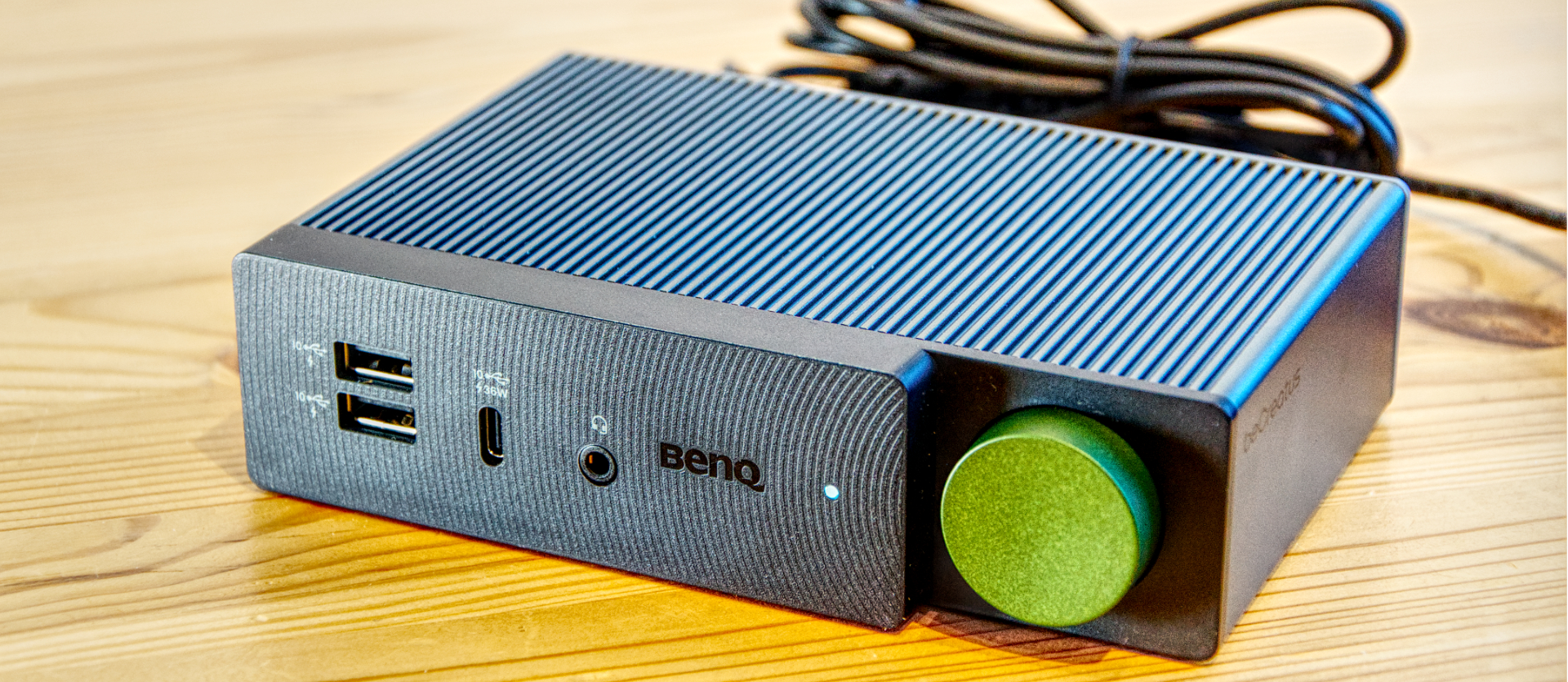TechRadar Verdict
While not supporting Thunderbolt 4 isn’t a huge deal, having no downstream Thunderbolt port certainly is. But its other weaknesses, basic plastic construction and redundant ports undermine the relatively lower cost of ownership.
Pros
- +
HiFi styling
- +
Dual HDMI and one DisplayPort out
- +
Four 10Gbps USB ports
- +
Beautifully made
Cons
- -
Expensive
- -
DisplayLink technology
- -
Bandwidth crunch
Why you can trust TechRadar
BenQ beCreatus DP1310: 30-second review
BenQ is a brand best known for displays, but the BenQ beCreatus DP1310 is a USB-C dock designed to connect multiple monitors (some BenQ-made, perhaps) to a laptop via USB-C.
Unlike many competitor devices, this unit looks much more like HiFi hardware than computer equipment, with the on/off button on the front giving a distinct volume control appearance.
Despite its looks, this USB-C docking station was designed to connect a laptop using USB-C to power and peripherals with a single cable. While the ports appear identical, this isn’t a Thunderbolt dock for those with that port on their laptop.
It offers a triple monitor connection with two HDMI ports and one DisplayPort, four USB 3.2 Gen 2 ports, one of which is USB-C, dual USB 2.0, a LAN port, and a 3.5mm audio jack.
The caveat to the port selection is that this is all driven from a single USB 3.2 Gen 2 Type-C downlink from the laptop, so a 10Gbps line is divided between all those potential devices.
In short, the more things you connect, the smaller a bandwidth slice of the pie each will get.
Using the display outputs also requires a software driver for DisplayLink to be installed on the host system, or it won’t work.
Sign up to the TechRadar Pro newsletter to get all the top news, opinion, features and guidance your business needs to succeed!
As well-made as the BenQ DP1310 is and lovely, it is an expensive USB-C dock that can’t negate some of the significant limitations of using USB-C technology in this way come with inherently.
However, with 100W charging provided for the connected laptop, it will work with the more demanding systems and charge them while in use. Also, the ability to control a second HDMI source may attract some game developers.
BenQ beCreatus DP1310: Price and availability
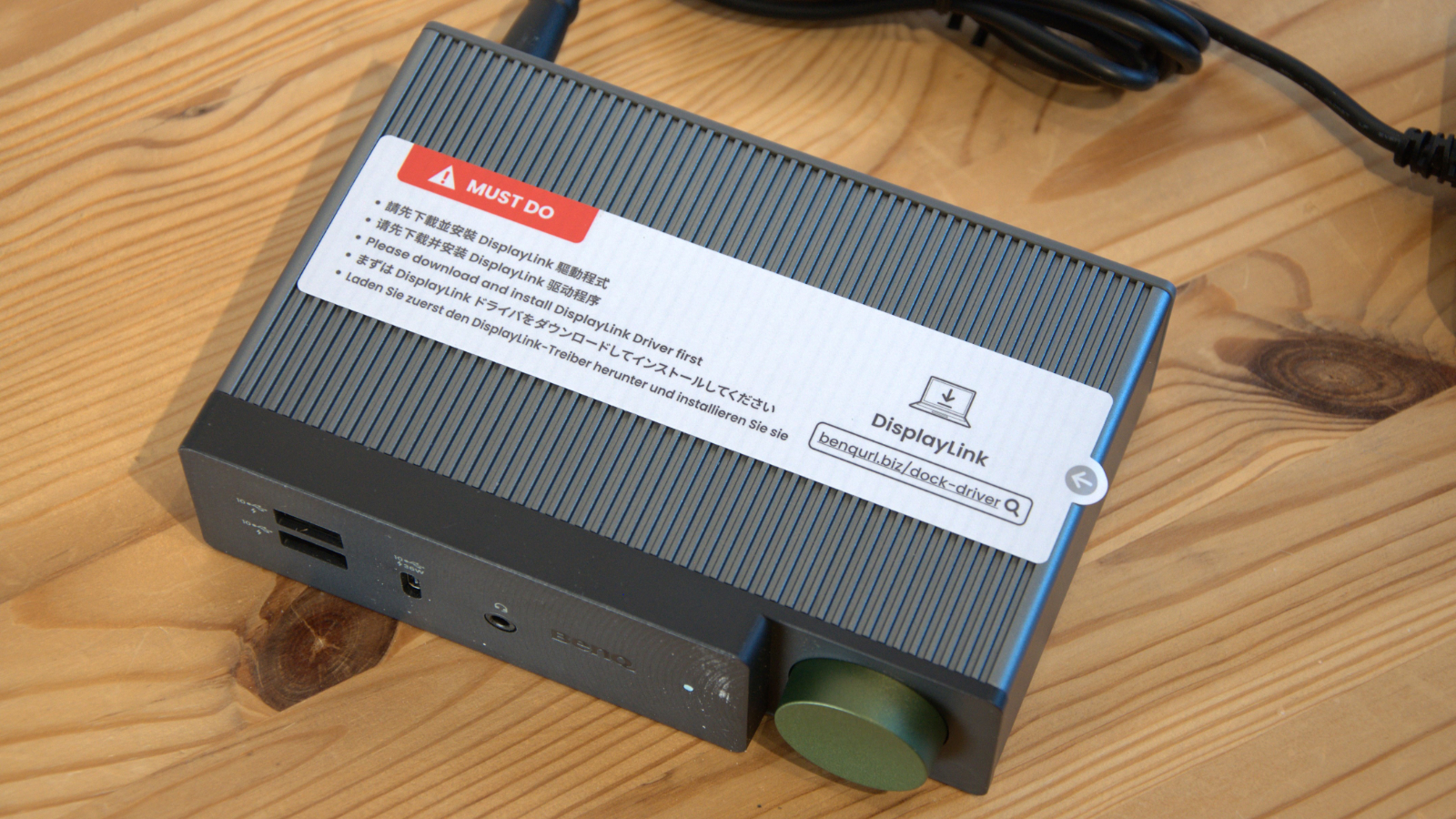
- How much does it cost? $299/£309/€ 360
- When is it out? It is starting to be available now
- Where can you get it? Through online retailers like Amazon.
The price for the BenQ DP1310 is reasonably consistent across regions. Using Amazon as the source, it costs $299 in the USA, £309 in the UK, and €360 across most of Europe. With exchange adjustments, this is one of those common examples of a product being cheaper in the USA than in Europe.
The snag with that price is that Thunderbolt docks are cheaper than this, like the $287.99 StarTech Thunderbolt 3 Dock.
Those wanting a cheap USB-C dock without the 100W charging can get the Belkin 14-part USB-C Docking Station for about half the asking price of the BenQ.
From a value perspective, the BenQ has a hill to climb.
- Value: 3 / 5
BenQ beCreatus DP1310: Specs
| Technology | USB-C, DisplayLink |
| Compatibility | Windows, macOS, Android, iOS, ChromeOS, Ubuntu |
| Number of Ports | 13 |
| Ports | 1x USB 3.2 Gen 2 upstream, 3x USB 3.2 Gen 2 Type-A, 1x USB 3.2 Gen 2 Type-C, 2x USB 2,0 Type-A, 1x HDMI 2.1, 1x HDMI 2.0, 1x DisplayPort, 1x HDMI 2.0 in, 1x universal audio combo jack, 1x 1GbE RJ45 Ethernet port |
| Upstream power | 100W |
| Size | 156 x 103 x 40 (mm) (W x D x H) |
| Weight | ?550g |
| Accessories | Adapter 180W 19.5V 9.23A |
BenQ beCreatus DP1310 Design
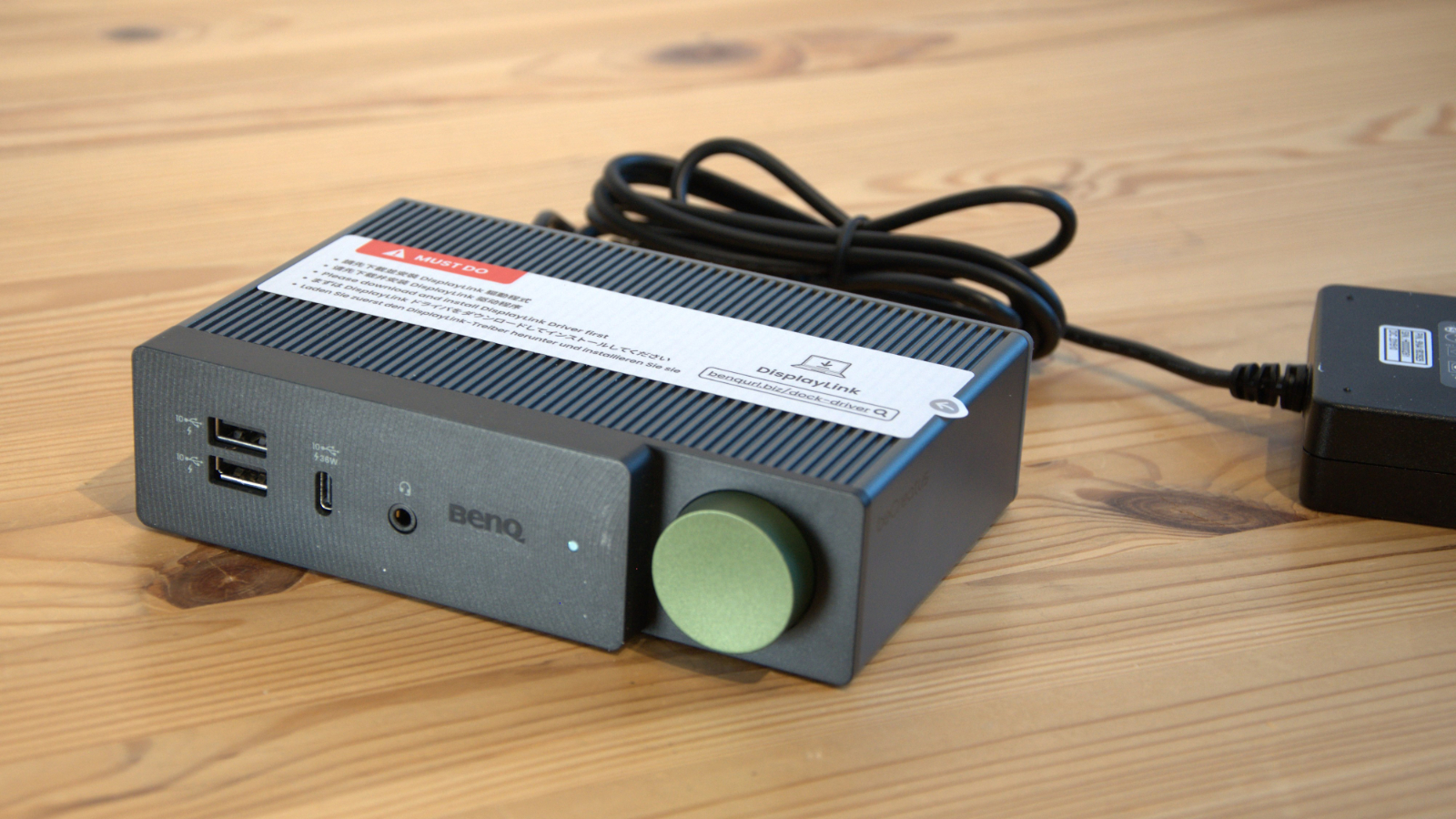
- Compact and stylish
- Passively cooled
- Unique port selection
At 550g, the BenQ DP1310 feels heavier than expected for a small aluminium box of 156 x 103 x 40mm, making it much smaller than typical USB-C docks.
The source of the heft is balanced between the internal components and a substantial aluminium case, capped front and back by plastic facia.
The extruded metal tube that provides most of the enclosure has a corrugated profile to help radiate heat and avoid the need for cooling fans and air vents.
Rubber feet are on both the base and the end, providing some choice as to how it can be orientated, and vertical would work well on a busy desktop.
The stylists behind this design clearly thought about HiFi when they designed this dock, as the large green power button. Sadly, this doesn’t rotate, which might be a missed opportunity.
It is dual function, but not in the way you might expect. Pressing it for three seconds powers the dock, and after it's on, click it once the video output mode changes.
Along with the dramatic power button, the front has two 10Gbps USB Type-A ports, a single USB-C 10Gbps port with up to 36W power output (ideal for phone charging), and a 3.5mm headphone jack socket.
The rear has another Type-A 10Gbps port, two USB 2.0 ports for the mouse and keyboard, the USB-C downstream from the laptop, a 1Gbit LAN port, three HDMI ports and one DisplayPort.
Just to confuse matters, it doesn’t have four display outputs since one of the HDMI ports is an input. One of the HDMI ports is rated as a 2.1 specification, with 120Hz at 4K or 60Hz at 8K resolution.
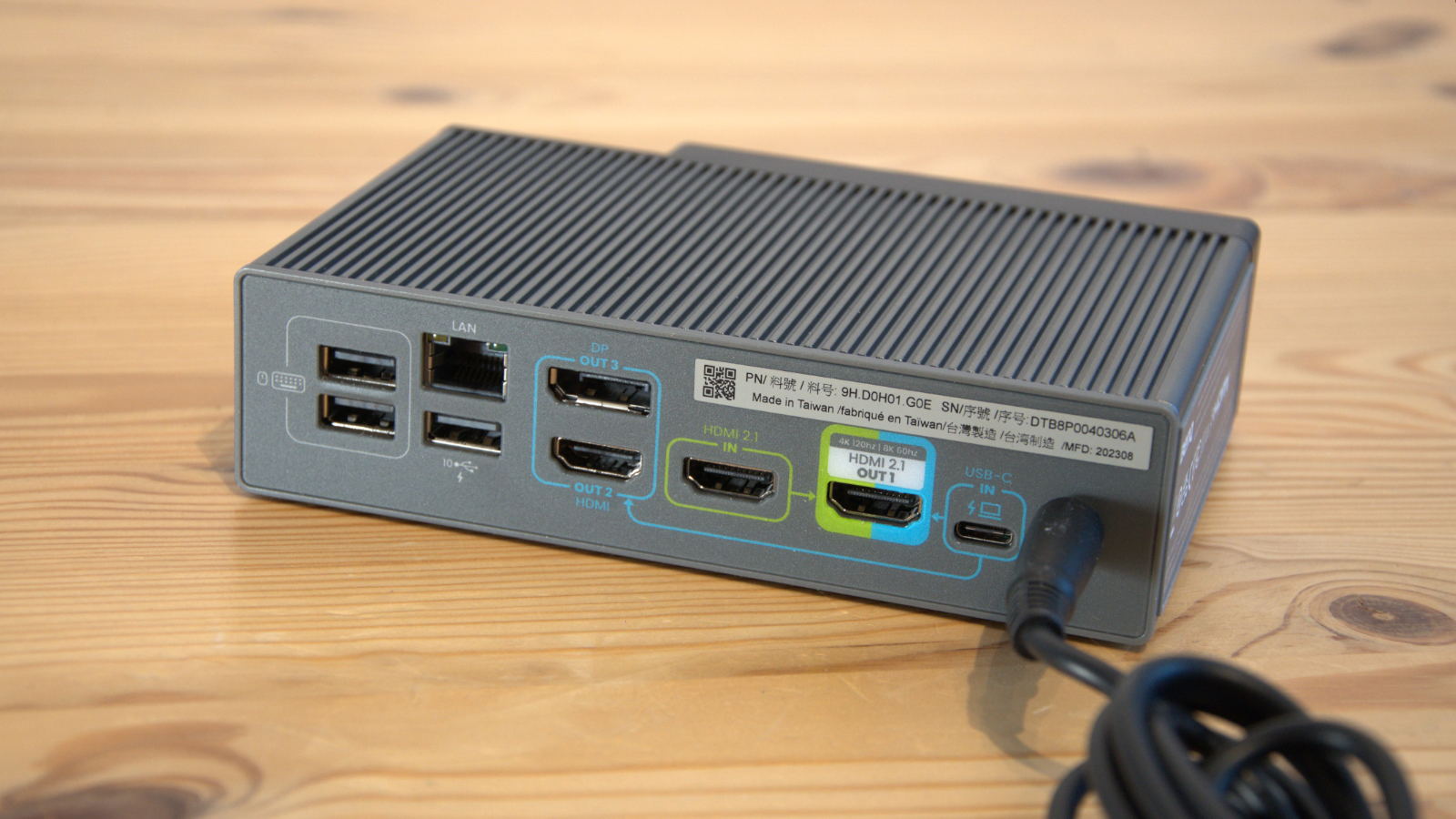
In the box with the dock is a large FSP Group branded PSU rated for 19.5V at 9.23A with a total output of 180W, a UK and EU power cable (for European customers), a BenQ-certified USB 2.1 HDMI cable and a USB-C 3,2 Gen 2x2 rated cable.
It’s unclear why the USB cable is rated for Gen 2x2 20Gbps, as the dock only connects using Gen 2 10Gbps, even if support for Gen 2x2 would have been wonderful.
- Design: 3.5 / 5
BenQ beCreatus DP1310: Features
- Oversubscribed USB bandwidth
- HDMI in and out
- 100W charging power
Having four USB ports, each rated for 10Gbps, there is something of an obvious over-subscription when the dock only connects to the host using a single 10Gbps connection. And that doesn’t consider the extra demands added by the LAN port, display outputs or the USB 2.0 ports.
Anyone using this needs to know that copying a file from a Gen 2 capable external SSD to another connected to the dock will not go at the marketed 1,000MB/s if any other ports are in use.
That’s why Thunderbolt is such a popular dock technology; dividing up 40Gbps between lots of ports is easier than allocating a portion of 10Gbps for multiple uses.
While using an external SDD and a mouse and keyboard won’t run into big trouble with a monitor connected, there are limits to using USB-C as the whole bandwidth channel, and purchasers should be aware of those.
One odd twist about using USB for displays is that this isn’t an inherent feature of the technology. A software driver is required to configure a data pathway for the display data to travel over USB using either DisplayLink or SiliconMotion technology, and BenQ went with DisplayLink in this context.
A large sticker on the top of the BenQ DP1310 tells the owner to go to a specific website and download the driver onto the computer to provide this functionality. Without this driver, the display outputs from the BenQ DP1310 would be largely useless.
That said, one of the HDMI ports is designed to connect another system, possibly a games console, to the box, and then the power button is used to switch the monitor to this source.
That source system isn’t connected in any other way to the dock, so the mouse and keyboard won’t control the games console or second computer when you switch over.
This inclusion makes some sense, as DisplayLink is notorious for creating a lag between the computer and the video output that might be acceptable for office work but unsuitable for gaming.
The reasonable question is why you would do that, as most monitors have more than one input, and you could select a second source directly using the same cable connected to the dock.
Using DisplayLink, it is possible to connect two HDMI outputs and a single DisplayPort monitor to the dock, although because of the limited bandwidth, they can’t be 8K at 60Hz.
It can only support 8K with a single display connected, and a second display (HDMI or DP) is at 4K, or all three outputs can be 4K.
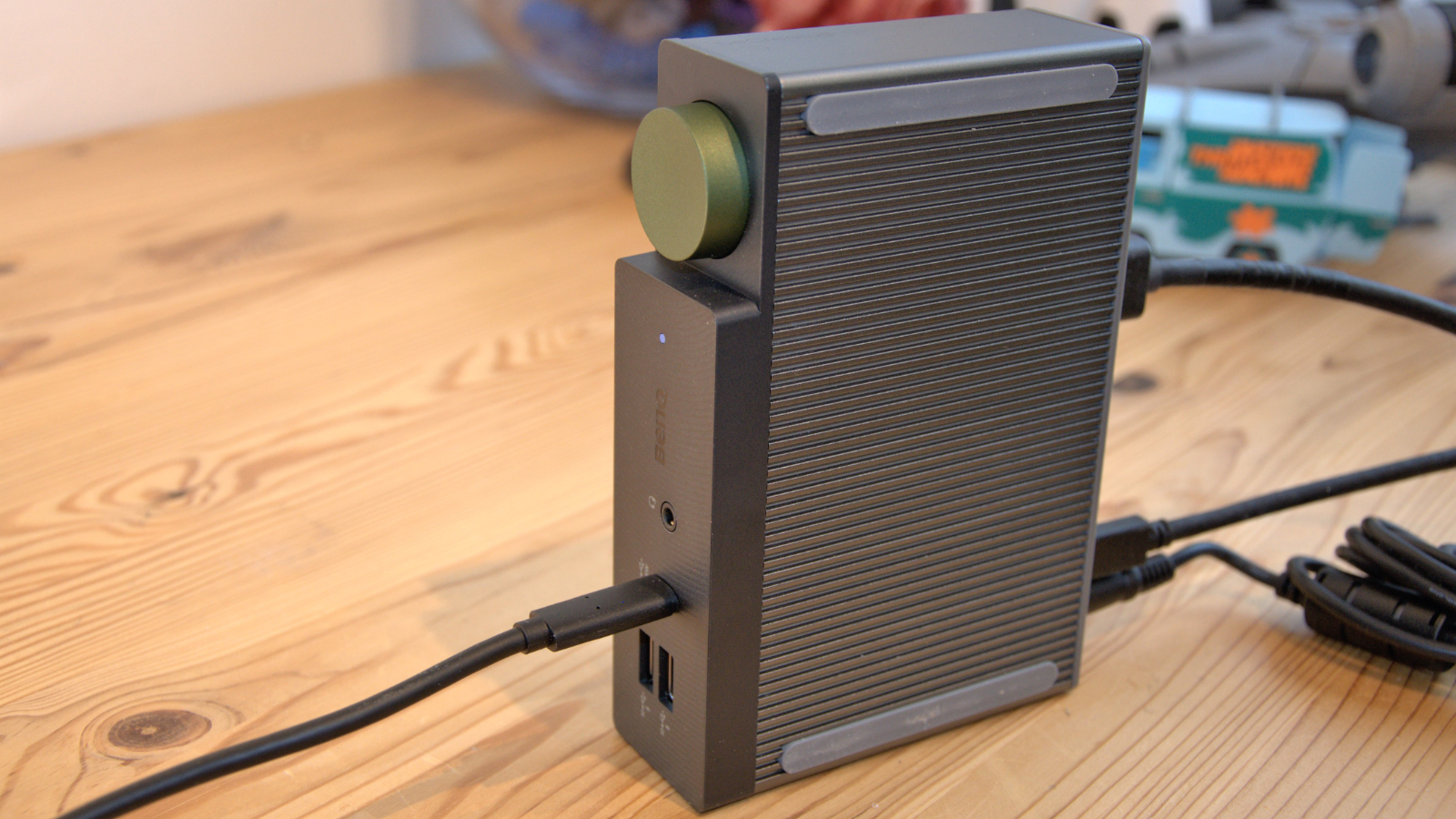
That description of the choices has numerous problems because not all laptops support 8K, and most can only effectively drive a single 4K output, not dual or triple outputs.
The issues mostly relate to integrated GPUs that use shared memory from the system, which cannot drive multiple displays with good enough performance for video playback. Some of AMD and Intel’s new ARC designs are better than prior technologies.
Those lucky enough to have discrete graphics cards onboard might be better positioned. Still, multiple high-resolution panels are more effectively driven with desktop systems and video cards that full PCIe slots can install.
Undoubtedly, the best aspect of the BenQ DP1310 is its power distribution model. The single USB-C connecting line delivers 100W of charging power to the attached laptop, covering almost any laptop. Another 36W can be sourced from the front-facing USB-C for phone or tablet charging, and another 7.5W can be obtained from each USB-A port.
Impressively, this unit can output a tremendous amount of power while maintaining an internal temperature of a maximum of 40C for prolonged periods.
- Features: 4 / 5
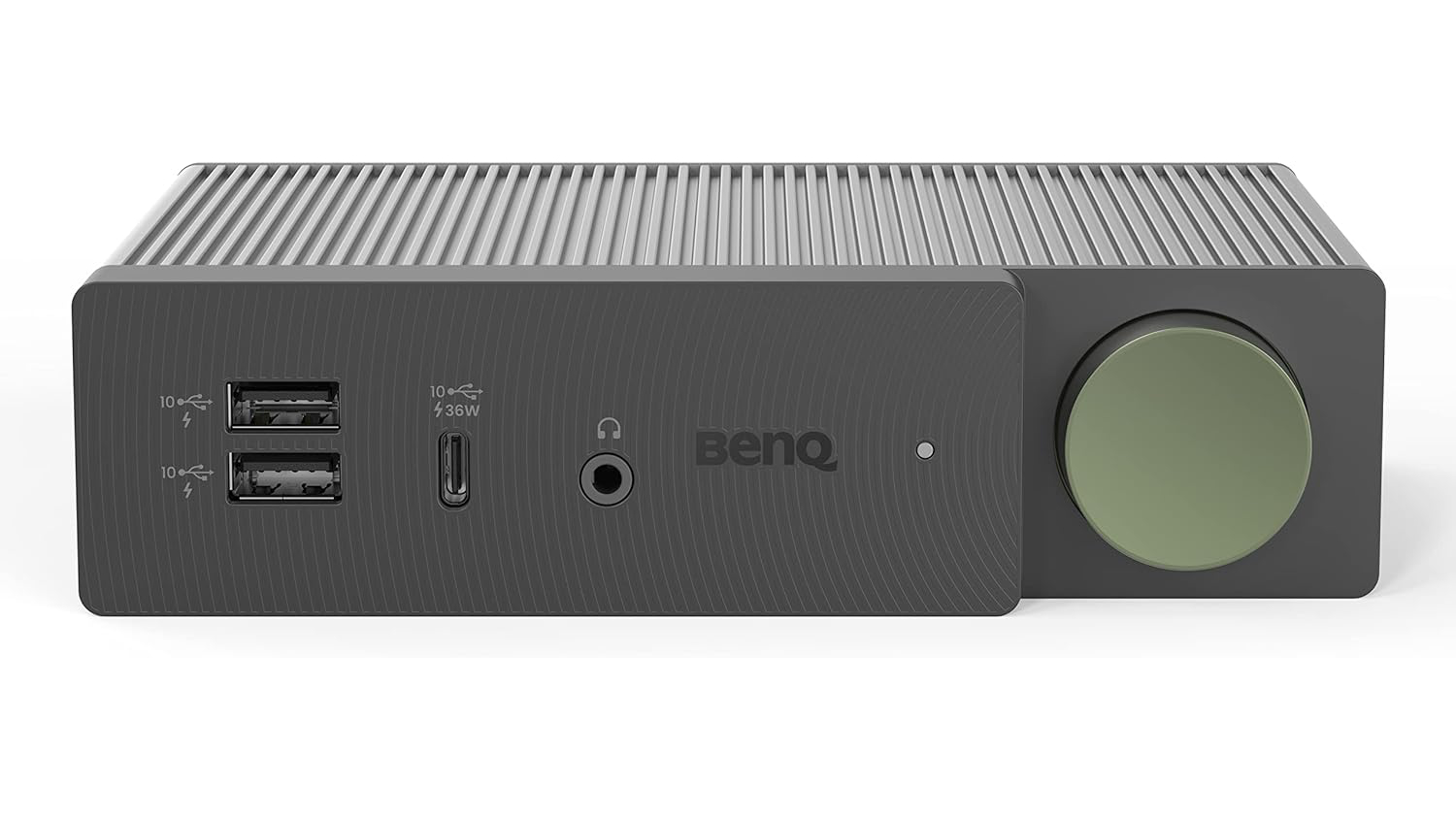
BenQ beCreatus DP1310: Verdict
A few issues with this dock might put some customers off, and they slightly undermine a beautifully made piece of hardware.
But let’s first cover what BenQ got right. That charging power of 100W is ideal for most users, even if it makes the PSU rather large.
Most modern laptops need at least 65W to charge and run. Those with an onboard discrete GPU might want 89W or more, and BenQ is looking to service that market with this device.
You can use it with a low-power laptop or a Chromebook, but that isn’t what this dock is designed for. These won’t support the three monitor outputs that the BenQ DP1310 offers, making it somewhat redundant.
These mobile workstations and gaming machines often have Thunderbolt ports, yet the BenQ DP1310 was designed to exploit USB 3.2 Gen 2 instead.
The choice of USB-C implemented with DisplayLink technology has well-documented limitations that might only become apparent after initial use.
Of these, the one that causes the most consternation is the latency created by the encoding of the data stream, making it entirely unsuitable for gaming or interactive graphics.
It might be fine for office work but not for gaming. The workaround for that is the HDMI in port, which would allow a machine with HDMI out to be connected to the dock without delays in DisplayLink. However, would it be simpler to connect it directly to the monitor than to connect two HDMI cables via the dock?
These caveats make us wonder if BenQ engineers fully thought the DP1310 through, as the USB-C and Thunderbolt docks market is remarkably competitive.
While the engineering and design that went into the BenQ DP1310 is excellent, it stretches a single USB-C 3.2 Gen 2 port beyond its practical limits, and maybe Thunderbolt or USB 4.0 might have been a better choice.
BenQ beCreatus DP1310: Report card
| Value | Priced like it’s a Thunderbolt Dock, but it is USB-C | 3 / 5 |
| Design | Small, elegant and very well-made | 3,5 / 5 |
| Features | Many ports and input link for HDMI from second source | 4 / 5 |
| Total | For a USB-C dock this should be cheaper. But it’s a high-quality item even if it can’t compete with a Thunderbolt alternative. | 4 / 5 |
Should you buy a BenQ beCreatus DP1310?
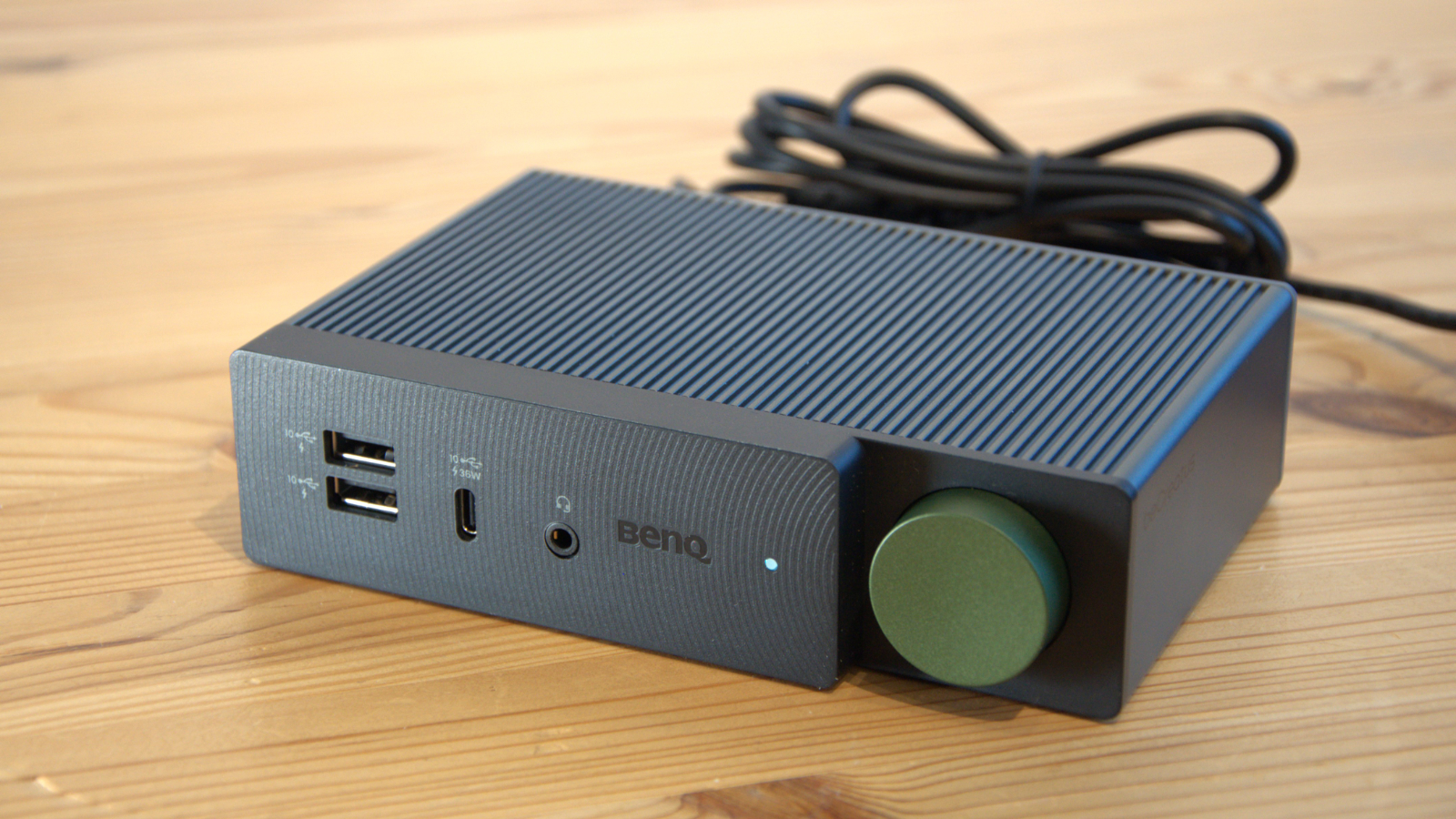
Buy it if...
You need multiple monitors
This dock can connect three monitors to a single system and also hang a second source (games console or another PC) onto the dock. However, DisplayLink isn’t great for games, and some PCs will struggle with multiple high-resolution displays.
BenQ styling is important
This hardware has a very distinctive look that might fit well if you already own BenQ monitors. This is easily one of the more attractive USB docks we’ve encountered.
Don't buy it if...
You have Thunderbolt ports
This is a USB-C port, and while it might work with some Thunderbolt ports, a native Thunderbolt dock would give a far superior experience.
You need fast displays
DisplayLink technology used in this device has limitations, and it can’t drive gaming displays that support 144Hz or higher refresh rates. But it also introduces latency, making it unsuitable for interactive (games) video. If you need more than one fast display, then this dock isn’t for you.
Also consider
OWC Thunderbolt Dock
A cheap but still high-quality dock from OWC, this design has eleven ports with 90W charging and three TB downlinks.
What it lacks is a dedicated monitor port, but adapters for HDMI or Display port from Thunderbolt are available.
Check out our OWC Thunderbolt Dock review
CalDigit Thunderbolt Station 4
The CalDigit Thunderbolt Station 4, or TS4 as it is also known, is a full-featured Thunderbolt dock that works with Thunderbolt 4/3 and USB-C.
It is not designed to be a portable dock but specifically to support a laptop user who comes to the office and wants a single cable connection to the network and a host of peripherals. To that objective, it has no less than 18 ports and can deliver up to 98W for charging a connected system.
Check out our CalDigit Thunderbolt Station 4 (TS4) review
Mark is an expert on 3D printers, drones and phones. He also covers storage, including SSDs, NAS drives and portable hard drives. He started writing in 1986 and has contributed to MicroMart, PC Format, 3D World, among others.
